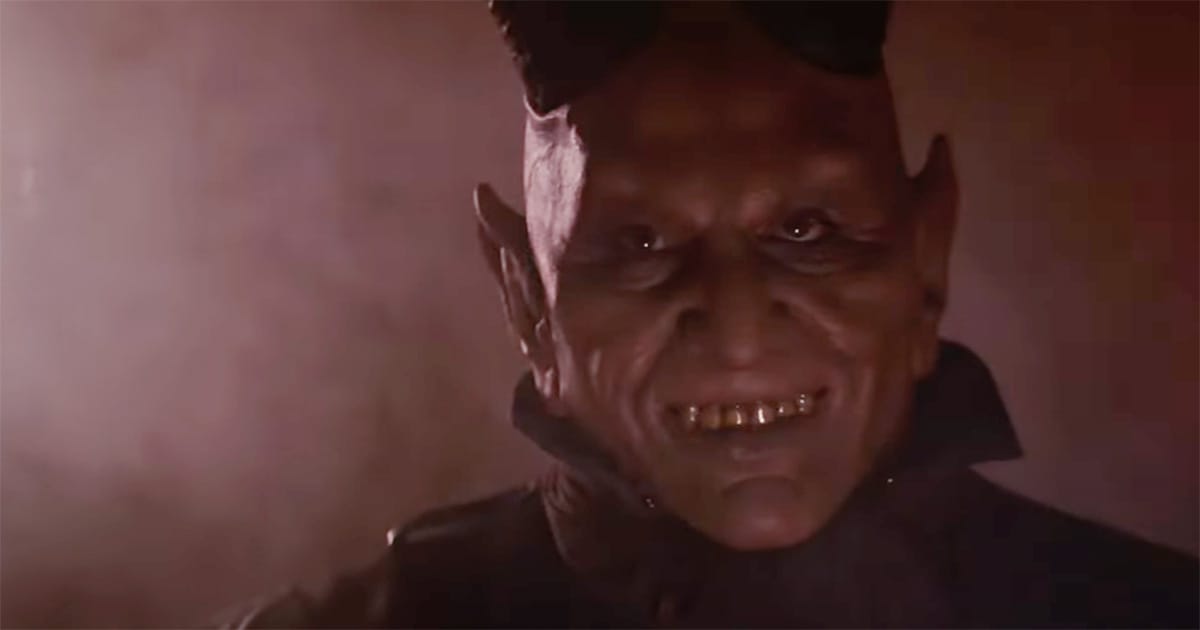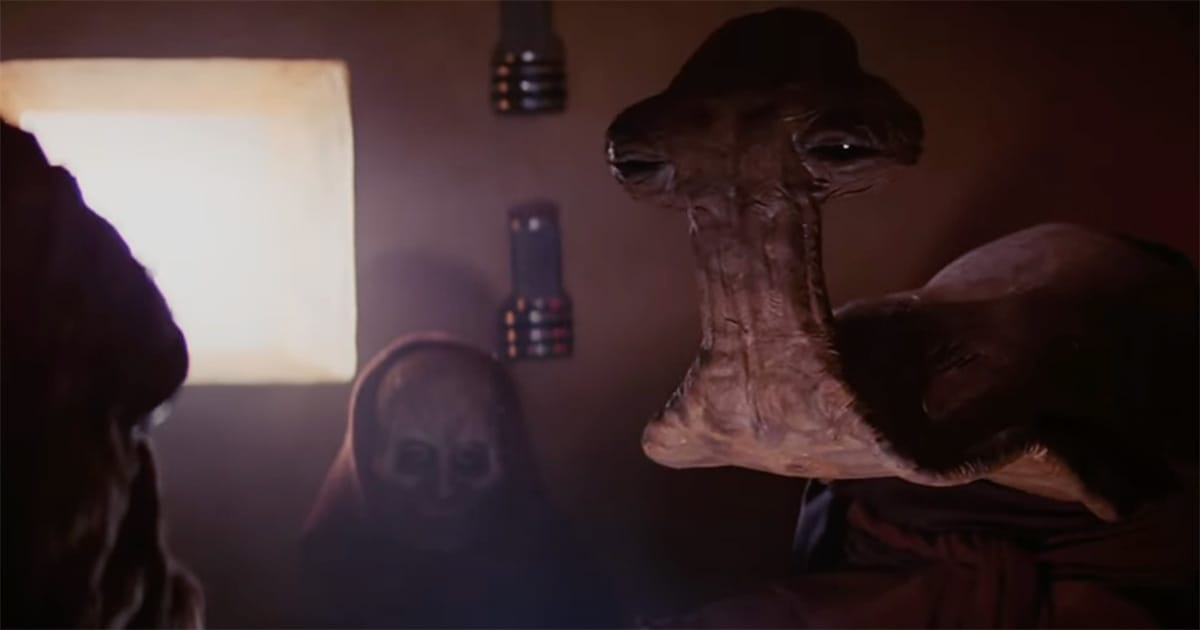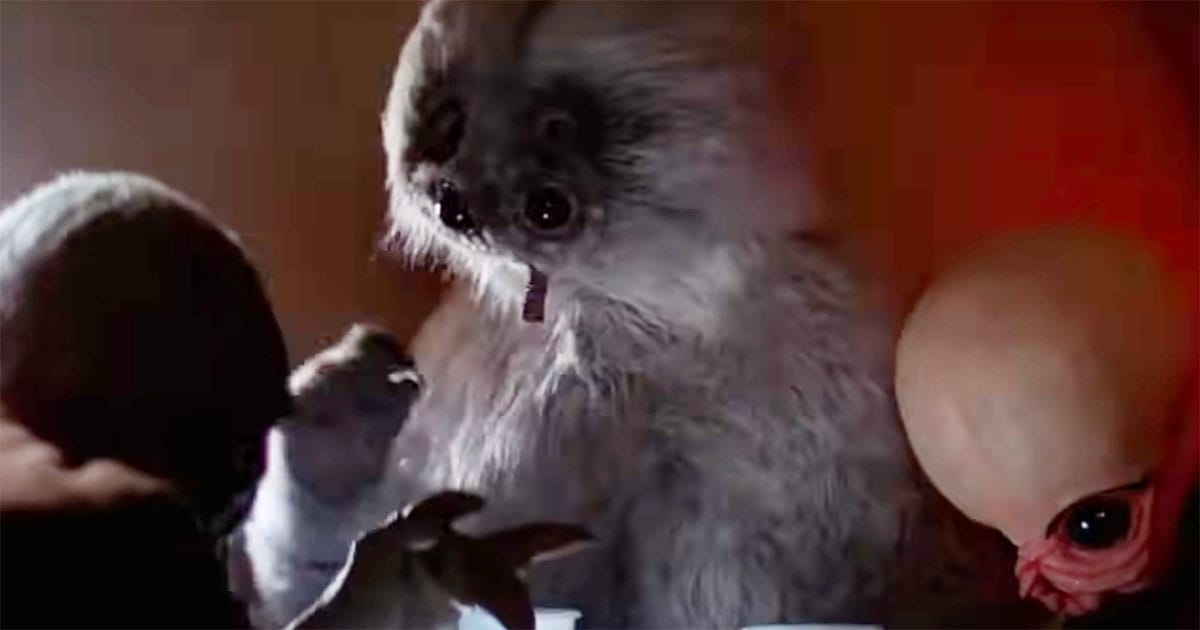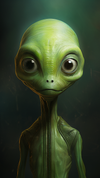How "Star Wars" Made Aliens Unforgettable in One Scene
A fleeting scene in "Star Wars" (1977) left a lasting mark on science fiction by flooding the screen with bizarre aliens, each crafted to unsettle, intrigue, and suggest a world too big to explain.

A Moment That Changed Sci-Fi Visuals Forever
The moment the doors to the Mos Eisley Cantina slide open in "Star Wars" (1977), the viewer is plunged into a visual riot of strange faces, shadowy corners, and unsettling music. The camera glides past creatures unlike anything seen in science fiction up to that point. There is no narration and no guide. Just noise, motion, and oddity.
It felt improvised but carried weight. The viewer had to accept it without question. In that instant, the galaxy became something larger and far less familiar. It asked the audience to look harder.
Most of what moved on screen made little narrative sense. The wolfman, the devil, the bug-eyed blob—they came and went without explanation. But they left an impression. That was enough.
Few scenes in science fiction history have worked so quickly on the imagination. Even fewer have done it without drawing attention to themselves. The Cantina did not explain, apologize, or ease the transition. It opened a door and let the chaos speak.
George Lucas's Vision and the Cantina as a Narrative Device
George Lucas wanted to shake the audience. In his view, a science fiction setting should not feel designed. It should feel lived in, worn down, and already crowded long before the heroes arrive. The Cantina had to do all of that in less than three minutes.

Instead of slowly introducing one or two aliens, Lucas demanded dozens. Each had to be strange enough to stand out, yet common enough to suggest the locals barely noticed them. There was no effort to label, sort, or explain. The viewer was expected to keep up.
This approach broke from tradition. Films like "Planet of the Vampires" or "The Time Travelers" might show one memorable alien per scene. The Cantina delivered a wall of faces all at once. And then moved on.
The scene worked not because it made sense but because it refused to. That refusal made the universe feel large. Larger than the plot, larger than the film. Lucas trusted the viewer to absorb it without a map, and the viewer did.
In one moment, the old rules of science fiction world-building collapsed. A new one took their place. Put everything on the screen, and let the audience decide what matters.
Two Crews, One Goal, Designing the Unforgettable
The Cantina scene was shot twice. First in London, then again in Los Angeles. The original footage, filmed at Elstree Studios, had alien costumes and masks created by Stuart Freeborn's crew. They were working with limited time and limited resources, and it showed.

Lucas was not satisfied. He wanted more creatures, and stranger ones. He brought in Rick Baker, a young but already inventive makeup artist in California, to reshoot close-ups and fill the scene with new aliens. Baker was told to be bold.
Many of the masks came from old Halloween molds or leftover props. Some were glued together from spare parts. The "devil" head, the "wolfman," the "fly," and the "elephant trunk" were never meant to share a screen. But in doing so, they created something greater than the sum of their parts.
Each creature was placed in the frame with a purpose. Not to explain who they were, but to interrupt the ordinary. Their shapes, colors, and movements disrupted visual comfort and made the scene impossible to scan in one glance.
There was no harmony, only density. Backgrounds became frontlines. The lack of cohesion became its own kind of realism.
Baker's additions gave the scene a patchwork quality. It looked inconsistent because it was. But that inconsistency sold the illusion.
Most of the aliens were never named in the film. Some never got names at all. But people remembered them. They looked once. Then they looked again.
The Power of Background Weirdness
The Cantina scene did not rely on dialogue or action to hold attention. It relied on clutter. Not the kind that clogs a scene, but the kind that makes the world feel too big to grasp all at once. That is what made it work.

Foreground characters like Han Solo and Obi-Wan Kenobi grounded the story. But it was the background creatures that made the story feel real. They served no function except to exist. And somehow that made them essential.
The eye kept searching, trying to make sense of it. That effort created a deeper kind of engagement. You were not watching actors perform. You were peering into a place that went on without you.
In most science fiction films, the viewer is shown what to care about. The Cantina did not do that. It handed you a wall of mystery and let your imagination do the sorting.
That kind of visual noise can feel accidental. In this case, it was the opposite. The confusion was planned. It forced the viewer to accept the scene not as fiction, but as observation.
The Cantina looked like a mess. That is why it felt real.
After the Dust Settled, the Cantina Still Lingers
The Cantina scene ended almost as quickly as it began. A few lines, a flash of blaster fire, and the story moved on. But the images stuck. That blur of strange heads and twitching limbs stayed with the viewer long after the Millennium Falcon lifted off.

Other films tried to match it. "Blade Runner" gave us crowded streets full of shadowy figures. "The Fifth Element" offered costume parades and alien cabarets. Even "The Mandalorian" circled back to dimly lit bars filled with odd silhouettes. But none had quite the same impact.
That is because the Cantina was never about spectacle. It was about suggestion. It told the viewer that the galaxy did not care whether he understood it. It was already in motion.
Lucas trusted confusion. He trusted clutter. He knew that a man in a devil mask, sitting in a booth with a fish-headed alien, could do more for world-building than a full page of exposition. What he built was not a set piece. It was a crack in the wall. The audience looked through it and saw something vast, lawless, and alive.
Forty-eight years later, we are still looking and still wondering and still seeing something new.

